Soft & Fluffy Sourdough Challah Bread
on Oct 21, 2024, Updated Nov 26, 2024
This post may contain affiliate links. Please read our disclosure policy.
Sourdough challah bread is a delicious blend of two baking traditions—traditional Jewish challah bread and tangy sourdough fermentation. This beautifully braided loaf has a tender, slightly sweet crumb and a gorgeous golden crust, perfect for celebrations or weekend baking.
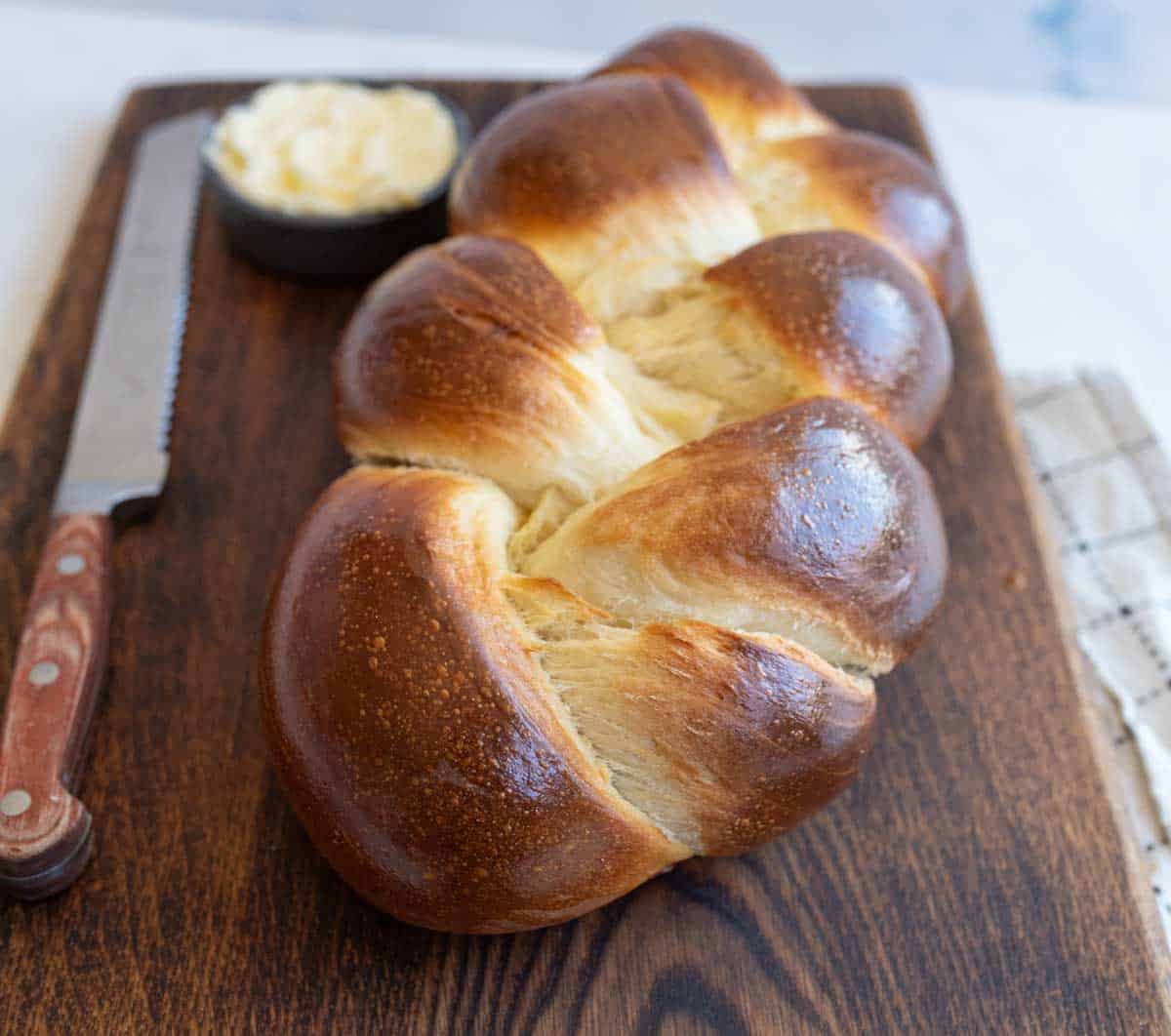
Made with simple ingredients like sourdough starter, honey, eggs, and oil, this challah is rich, soft, and absolutely irresistible. While this recipe requires a bit of time and patience, the results are well worth the effort. You’ll get a perfectly golden loaf with an airy crumb and just the right amount of sweetness.
This is such a simple bread recipe that it can be made for any meal, but the braiding step makes it such a visual show-stopper that it’s amazing served on a holiday table! The leftover challah is a perfect bread to use in French toast, bread pudding, and even homemade croutons.
🍞🥖 New to sourdough? Find out how to make your own sourdough starter here, find my most popular and basic bread recipe here, and search the sourdough archive here.
Table of Contents

Why You’ll Love This Recipe
- Rich and Flavorful: The combination of eggs, honey, and oil creates a rich and tender bread, while the sourdough starter adds a subtle tang that elevates the flavor.
- Beautifully Braided: The three-strand braid gives this challah an impressive look that’s perfect for special occasions or as a show-stopping centerpiece on any table.
- Sourdough Fermentation: Using a sourdough starter means a slower, more natural fermentation process, resulting in a more flavorful and easily digestible loaf.
- Great for Sharing: This large, beautifully braided loaf is perfect for serving at family gatherings, holiday meals, or for gifting.
Recipe Ingredients
- Active, bubbly sourdough starter
- Water
- Sugar
- Light oil, like avocado or canola
- Large eggs
- Salt
- Bread flour
See the recipe card below for full information on ingredients and quantities.

How to Make Sourdough Challah Bread
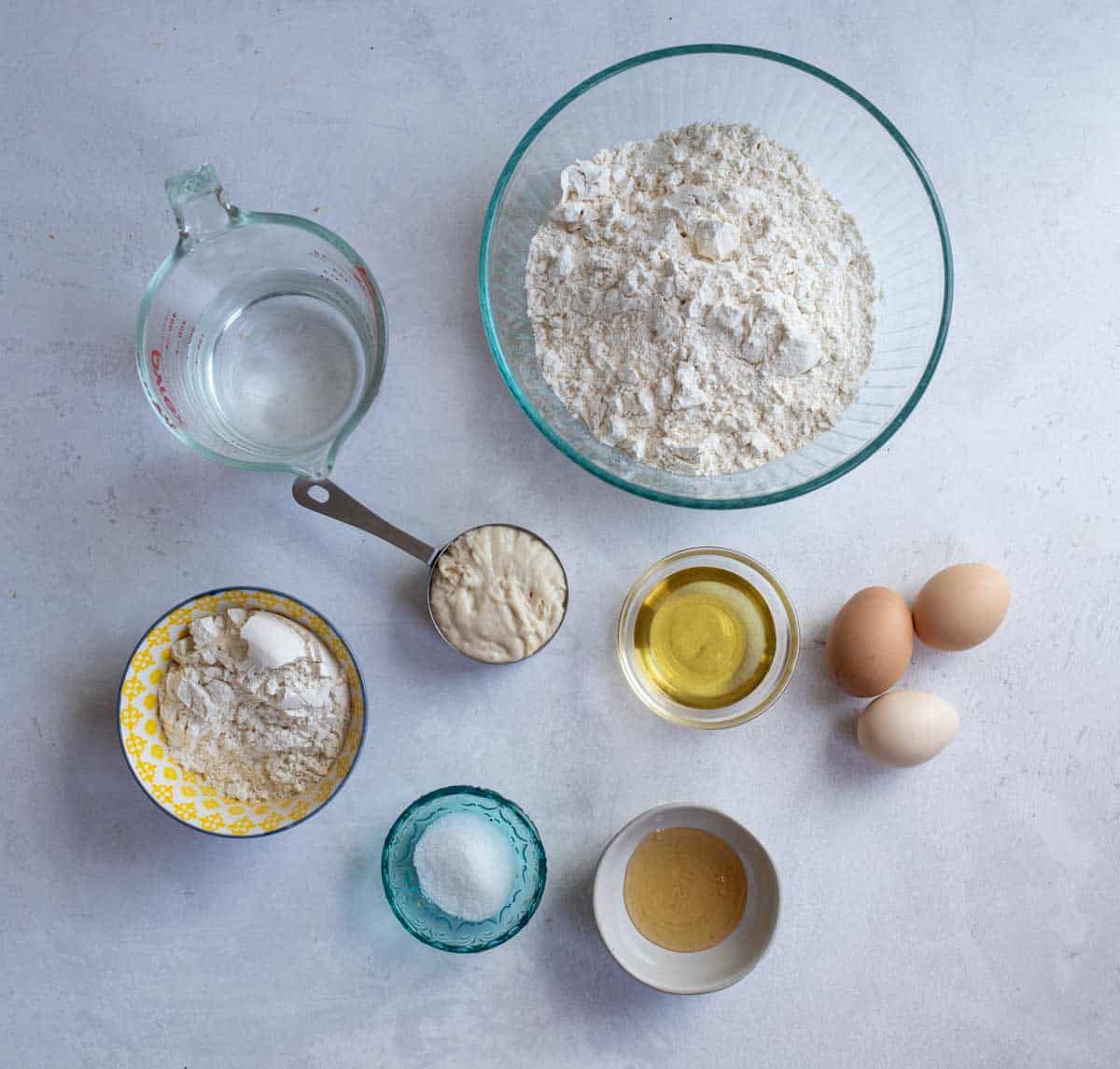

Step 1: Feed your starter 4-12 before using. The night before baking, mix the ingredients in the bowl of a stand mixer until well combined.
Step 2: Mix for an additional 5 minutes. Add the remaining flour a little at a time until a smooth dough forms, and mix for an additional 5 minutes.
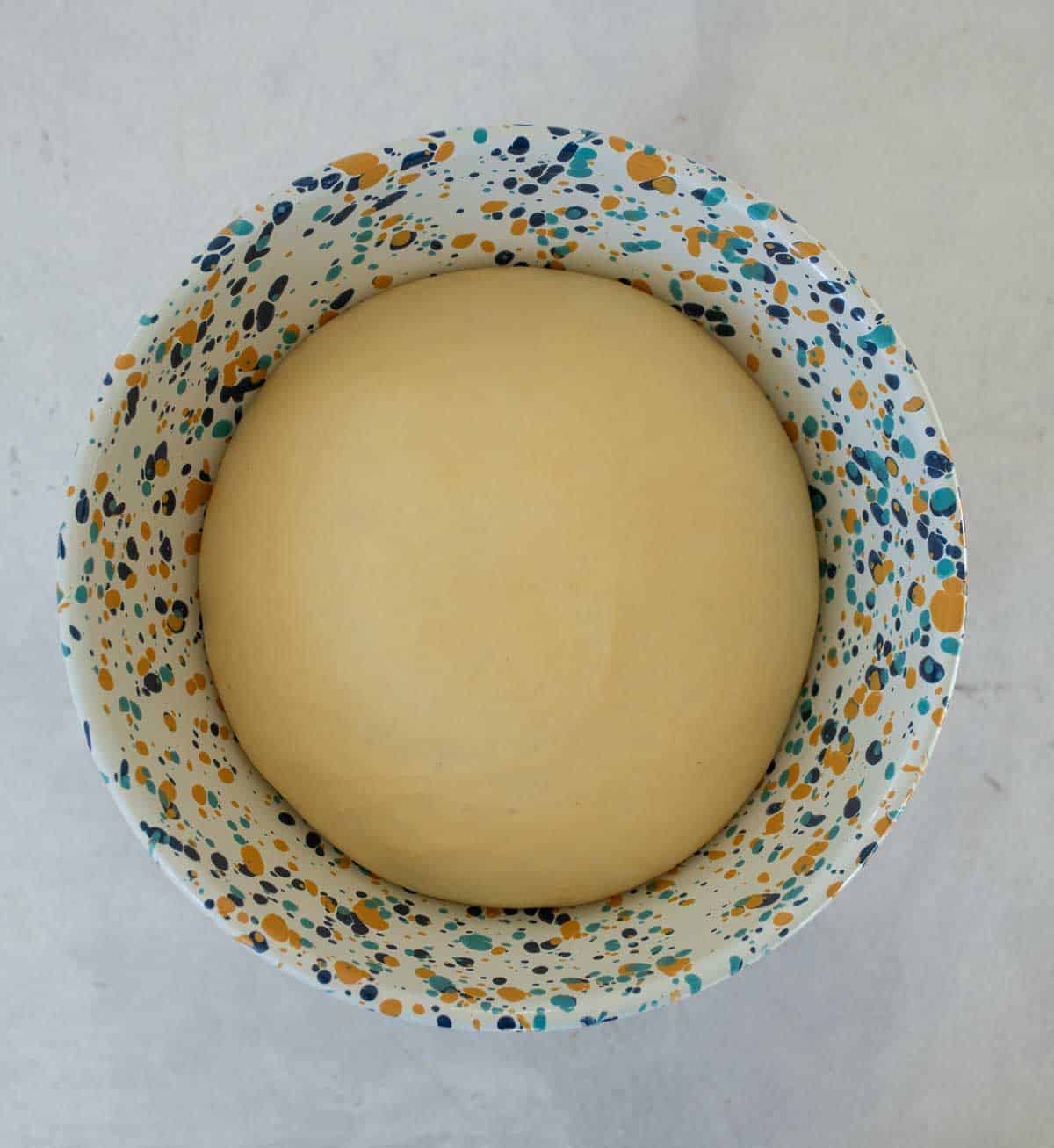

Step 3: Place the dough in a glass bowl and cover with a towel. Let rise for 12-18 hours until doubled in size.
Step 4: Divide the dough into 3 equal portions. Roll each portion into a long log, about 18 inches long.


Step 5: Pinch the ends of the ropes together and braid the pieces together, tucking under the ends. Place on a baking sheet and let rise for 1 hour.
Step 6: Brush the entire loaf with the egg wash. Bake for 30-35 minutes or until it starts to turn golden brown.
Recipe FAQs
Yes, you can substitute all-purpose flour for bread flour. However, the bread flour gives the challah a softer texture. If you use all-purpose flour, the bread will still be delicious, but it may not be quite as soft.
Store the challah in an airtight container at room temperature for up to two days. You can also freeze it for up to a month. If freezing, slice it first so you can easily defrost and toast individual pieces as needed.

Expert Tips
- Patience with Kneading: This dough is quite wet, and it may seem like it won’t come together. Be patient! After about 5 minutes of kneading in two sessions, the dough will become smooth, glossy, and elastic, pulling away from the sides of the mixing bowl.
- Sourdough Starter: Make sure to feed your sourdough starter 4-12 hours before starting the dough. It should be bubbly and active to ensure a good rise.
- Braiding the Dough: Don’t worry if braiding feels intimidating. The key is to keep the strands even and follow the pattern of a basic braid. It’s easier than it looks, and the final result is stunning!

More Sourdough Recipes to Consider
Sourdough Recipes
Sourdough Cinnamon Swirl Bread – A Perfect Breakfast Loaf
Sourdough Recipes
No Knead Sourdough Bread {Easy Beginner’s Recipe}
Sourdough Recipes
How to Feed a Sourdough Starter: Prepping for Perfect Loaves
Sourdough Recipes
Sourdough Baguettes
Did you make this recipe? Leave a ⭐️ review and share it on Instagram, Facebook, or Pinterest!

Soft and Fluffy Sourdough Challah Bread
Ingredients
For the bread dough:
- 1 cup active bubbly sourdough starter, (200 grams)
- 1/2 cup water, (120 grams)
- ⅓ cup sugar, (67 grams) or honey
- ⅓ cup light oil, like avocado or canola, (80 grams)
- 3 large eggs
- 2 teaspoons salt, (12 grams)
- 3 1/2 cups bread flour, (460 grams)
For the Egg Wash:
- 1 large egg
- 1 tablespoon water
Instructions
- Feed your sourdough starter: Start by feeding your sourdough starter at least 4-12 hours before you begin, ensuring that it is active and bubbly.
- Mix the dough: The night before baking, add the sourdough starter, water, sugar, oil, eggs, salt, and 2 cups of flour to the bowl of your stand mixer and mix until well combined.
- Mix for an additional 5 minutes. Add the remaining flour a little at a time until a smooth dough forms (you may not need all of the flour), and mix for an additional 5 minutes.
- First rise: Remove the dough from the bowl and place it in a ceramic or glass bowl. Cover the bowl with plastic wrap, a damp towel, or a lid, and allow the dough to rise at room temperature for about 12-18 hours. It should roughly double in size.
- Divide and shape: In the morning, divide the dough into 3 equal portions. Roll each portion into a long log, about 18 inches long.
- Braid the challah: Lay the 3 dough ropes side by side. Pinch the ends of the ropes together. Braid the pieces together and tuck the ends under. Make sure all ends are well tucked under the loaf.
- Second rise: Place the braided loaf on a lined or greased baking sheet. Cover it with a clean towel and let it rise for another hour.
- Preheat the oven: Preheat your oven to 425°F (220°C).
- Apply the egg wash: In a small bowl, beat the egg and water together to make the egg wash. Brush the wash over the entire surface of the loaf.
- Bake the challah: Bake for 30-35 minutes or until it starts to turn golden brown. If the top browns too quickly, tent the loaf with aluminum foil to prevent over-browning.
- Cool and enjoy: Let the challah cool slightly before slicing.
Notes
- If you don’t have bread flour, you can substitute it with all-purpose flour. The dough might be a little softer and not hold its braided shape as well as with bread flour.
- Use just enough flour for the dough to come together after starting wet. Adding 1/4 cup at a time and letting it incorporate is a good rule of thumb.
- Be gentle in the braiding process! As the dough rises, it will fill any spaces so don’t worry about your braid being “too loose.”
- This braided bread is so gorgeous that it always makes a holiday dinner table look super fancy, and it looks way harder than it is!


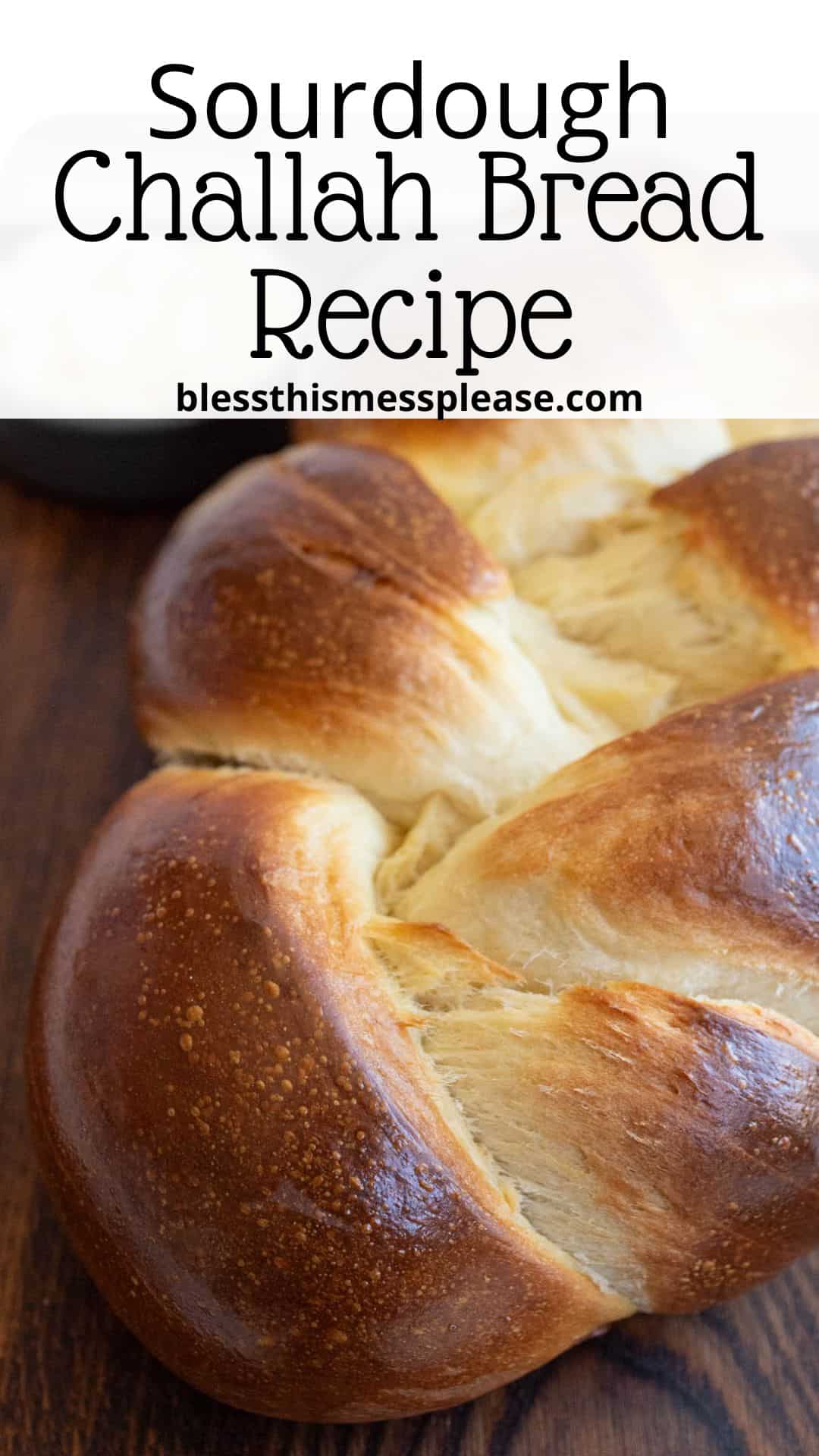




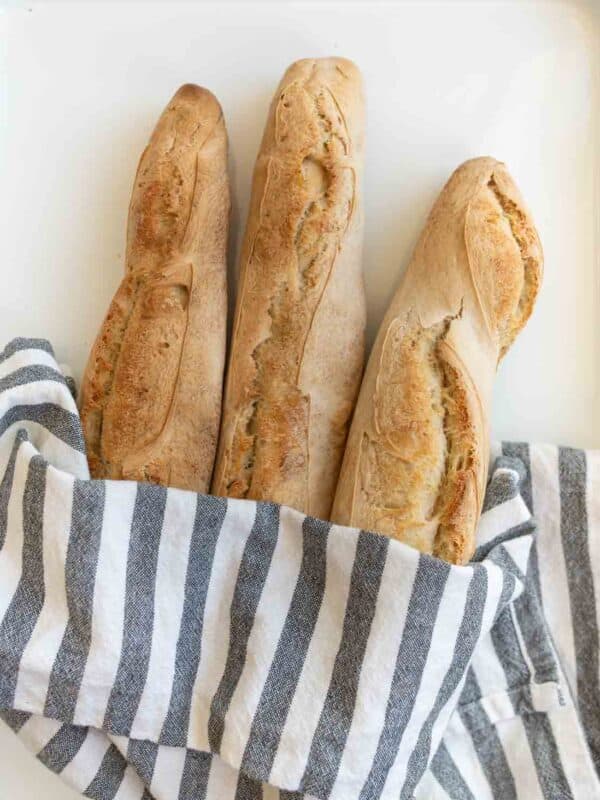






Hi Melissa:
Could I let it proof overnight in the fridge? Or what should be the temperature of the kitchen to let it proof at room temperature?
You have some flexibility, but you’ll want to proof it on the counter, 65-80 all work.
This makes a delicious bread that will impress your guests! The dough was very easy to work with and soft after sitting overnight. Melissa is so kind and answered all my questions I had while preparing my dough! I made an herb butter to pair with it and my family really enjoyed it.
Thank you thank you Kelsey! Love hearing from you!
This came out really well! I don’t have a dough hook, so I manually kneaded the dough, adding flour as needed to get the texture right. Definitely a slightly more delicate dough than a traditional challah, but if you’re used to shaping and working with sourdough dough, you’ll be fine. This is definitely a keeper!
(Just, if you bake using weight, and are making more than one loaf, make sure you calculate your increases accordingly — see my first comment 😅)
I noticed my dough was really wet (making a double batch and using the weight measurements instead of volume) . Went back and looked at the recipe. Apparently, when you change the quantity, it only changes the volume, nothing else, so I had essentially made a batch of dough with twice the eggs. Just tossed the dough. I’ve manually adjusted the weights in my printout and will start again today…
It’s a feature that I can’t update on my own and I have asked and asked for it to be updated, I’m so sorry the weights don’t update.
Hi! I just finished the first rise and the dough is too wet to braid. Is there anything I can do to tighten the dough?
Knead it again? Add flour? Just bake in a rustic shape?
For sure add more flour and knead it a bit on the counter top before shaping, no issues with that. There’s so much variation in kitchen temps, protein content in flour, and starters that there’s no trouble adding a little before shaping for any dough that doesn’t feel like a traditional yeast dough when you are ready to shape it.